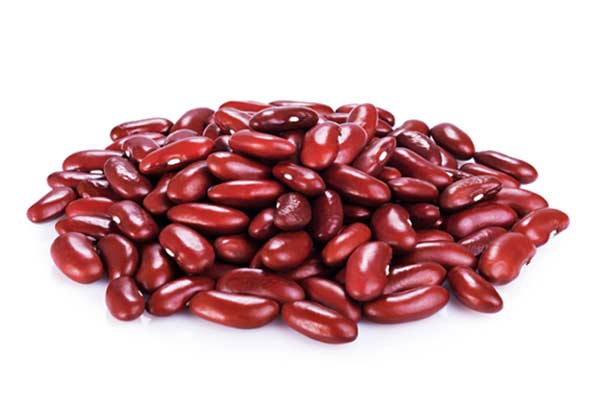Just as its name suggests, the kidney bean is shaped like a kidney. Since these dark red beans hold their shape really well during cooking and readily absorb surrounding flavors, they are a favorite bean to use in simmered dishes. Kidney beans that are white in color are known as cannellini beans.
Kidney beans and other beans such as pinto beans, navy beans and black beans are known scientifically as Phaseolus vulgaris. They are referred to as “common beans” probably owing to the fact that they all derived from a common bean ancestor that originated in Peru.
They spread throughout South and Central America as a result of migrating Indian traders who brought kidney beans with them from Peru. Beans were introduced into Europe in the 15th century by Spanish explorers returning from their voyages to the New World.
Subsequently, Spanish and Portuguese traders introduced kidney beans into Africa and Asia. As beans are a very inexpensive form of good protein, they have become popular in many cultures throughout the world. Today, the largest commercial producers of dried common beans are India, China, Indonesia, Brazil and the United States.
Kidney beans are a very good source of cholesterol-lowering fiber, as are most other beans. In addition to lowering cholesterol, kidney beans’ high fiber content prevents blood sugar levels from rising too rapidly after a meal, making these beans an especially good choice for individuals with diabetes, insulin resistance or hypoglycemia. When combined with whole grains such as rice, kidney beans provide virtually fat-free high quality protein. But this is far from all kidney beans have to offer. Kidney beans are an excellent source of the trace mineral, molybdenum, an integral component of the enzyme sulfite oxidase, which is responsible for detoxifying sulfites. Sulfites are a type of preservative commonly added to prepared foods like delicatessen salads and salad bars. Persons who are sensitive to sulfites in these foods may experience rapid heartbeat, headache or disorientation if sulfites are unwittingly consumed. If you have ever reacted to sulfites, it may be because your molybdenum stores are insufficient to detoxify them.
Kidney beans are rich in protein.Although the nutritional quality of bean proteins is lower than animal proteins, beans are an affordable alternative for many people in developing countries.In fact, beans are one the richest plant-based sources of protein, sometimes referred to as “poor man’s meat.
How to Select and Store
Dried kidney beans are generally available in prepackaged containers as well as bulk bins. Just as with any other food that you purchase in the bulk section, make sure the bins are covered and that the store has a good product turnover rate.
Whether purchasing kidney beans in bulk or in a packaged container, make sure there is no evidence of moisture or insect damage and that the beans are whole and not cracked.
Store dried kidney beans in an airtight container in a cool, dry and dark place where they will keep for up to 12 months.
Cooked kidney beans will keep fresh in the refrigerator for about three days if placed in a covered container.

